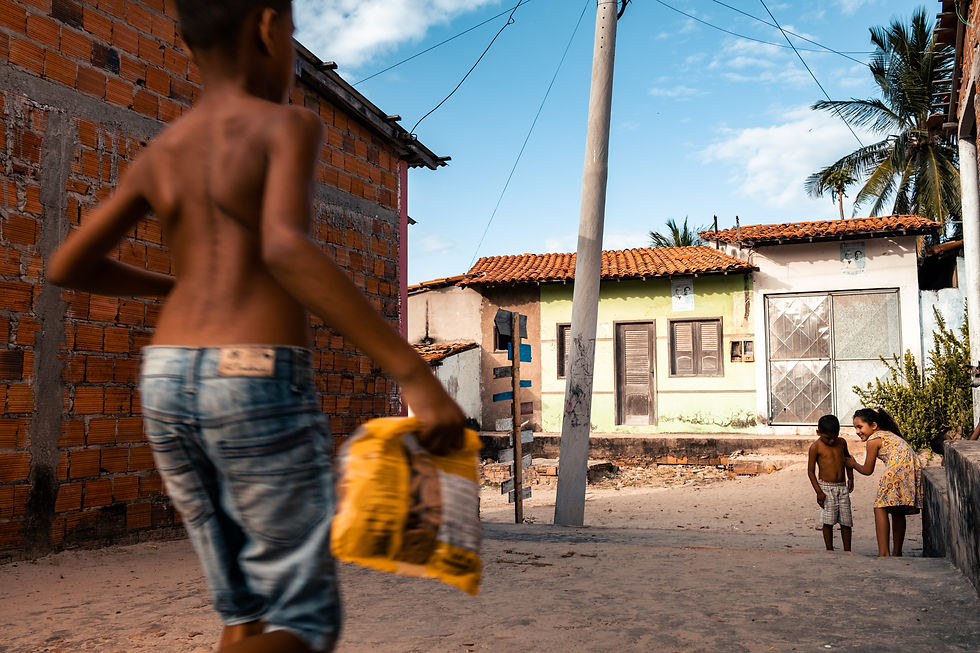The world’s most sustainable villages and what they teach us
- Editorial Team SDG11

- Aug 26
- 3 min read

At the moment that climate change, biodiversity loss and resource depletion dominate global headlines, the role of small communities in building a sustainable future is often underestimated. Villages across the globe are quietly setting powerful examples of resilience and ecological responsibility. Their approaches, ranging from renewable energy to heritage preservation, offer replicable models for societies seeking to address environmental and social challenges in a balanced, measurable way.
Pioneers of low-impact living
In Scotland, Findhorn Ecovillage has become a benchmark for environmentally conscious design. With a carbon footprint approximately 50% lower than the UK average, its success lies in integrating eco-build housing with renewable energy sources, including wind turbines and solar panels. The community’s innovative Living Machine wastewater treatment system has attracted global attention for its efficiency and replicability, making Findhorn a living laboratory for sustainable settlement planning.
In Australia, Crystal Waters Eco Village was the world’s first settlement designed around permaculture principles, covering 640 acres of which 80% is reserved for wildlife and agriculture. Its long-term success demonstrates the scalability of regenerative land use, echoing SDG 15 – Life on Land – and showcasing how human presence can coexist with biodiversity conservation.
Regeneration through local leadership
India’s Ralegan Siddhi transformed from a drought-affected, poverty-stricken village into a thriving model of rural self-sufficiency. Under the guidance of social activist Anna Hazare, the village adopted watershed management, biogas energy, and reforestation strategies, leading to a 400% increase in agricultural productivity and a dramatic improvement in water security. Such outcomes underscore the interconnection between SDG 6 – Clean Water and Sanitation – and community-led governance.
Colombia’s Gaviotas, established in the challenging Llanos region, reforested over 10,000 hectares using native species while developing cost-effective renewable technologies suited to tropical climates. This blend of ecological restoration and technical adaptation reinforces the importance of innovation in meeting SDG 9 – Industry, Innovation and Infrastructure.
Merging heritage and sustainability
In Iceland, Sólheimar Ecovillage has operated since 1930 with a strong ethos of social inclusion, integrating people with and without disabilities into all aspects of community life. Its reliance on geothermal energy and organic agriculture aligns with SDG 7 – Affordable and Clean Energy – while reflecting a deep respect for human rights and equality.
Germany’s Sieben Linden and Sweden’s Suderbyn Ecovillage illustrate the European movement towards closed-loop systems, cooperative economies, and low-carbon construction. Sieben Linden, for instance, reports that its residents use 70% less heating energy compared to the national average, a direct contribution to reducing greenhouse gas emissions.
Meanwhile, the Indian villages of Mawlynnong, Khonoma, and others demonstrate that cleanliness and waste reduction, when embedded in cultural tradition, can achieve remarkable results. Mawlynnong’s zero-plastic policy and bamboo dustbin system have made it a model for SDG 12 – Responsible Consumption and Production.
In Romania, Viscri balances tourism, heritage conservation, and environmental care, preserving traditional farming methods while encouraging sustainable economic growth – a lesson in how SDG 8 – Decent Work and Economic Growth – can harmonise with cultural identity.
Comparative sustainability indicators of selected villages
Village / Location | Renewable energy use (%) | Carbon footprint reduction (%) | Land reserved for conservation (%) | Key achievement |
Findhorn, Scotland | 100% (wind & solar) | ~50% lower than UK average | N/A | Innovative water recycling system |
Crystal Waters, Australia | ~60% (solar & passive) | N/A | 80% | First permaculture-based village |
Ralegan Siddhi, India | ~45% (solar, biogas) | N/A | 35% | 400% increase in crop productivity |
Gaviotas, Colombia | ~65% (solar & custom tech) | N/A | 10,000 ha restored | Reforestation in tropical climate |
Sólheimar, Iceland | 100% (geothermal, solar) | N/A | N/A | Inclusive social and economic model |
Sieben Linden, Germany | ~70% renewable | ~70% less heating energy usage | 50% | Cooperative, closed-loop systems |
Mawlynnong, India | N/A | N/A | N/A | 100% plastic-free & waste composting |
Viscri, Romania | N/A | N/A | N/A | Heritage preservation & eco-tourism |
Note: Percentages are approximate, based on available community reports and independent studies.
Why these villages matter
Collectively, these communities prove that sustainability is not confined to metropolitan innovation hubs. According to UN-Habitat, small settlements account for over 40% of global urban population growth, meaning their strategies have measurable influence on global emissions, biodiversity, and social resilience. The key is not only technological advancement but the integration of tradition, local governance, and community participation.
As global society searches for scalable solutions, these villages offer evidence-based pathways towards a future where environmental, economic, and social goals are interdependent rather than competing.
For further reading on global efforts towards sustainable living, visit:
Image credits and more information: https://stayinsolheimar.is/



